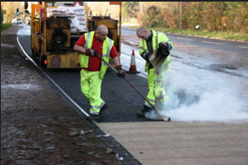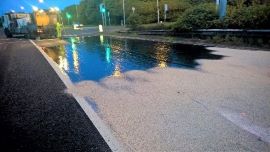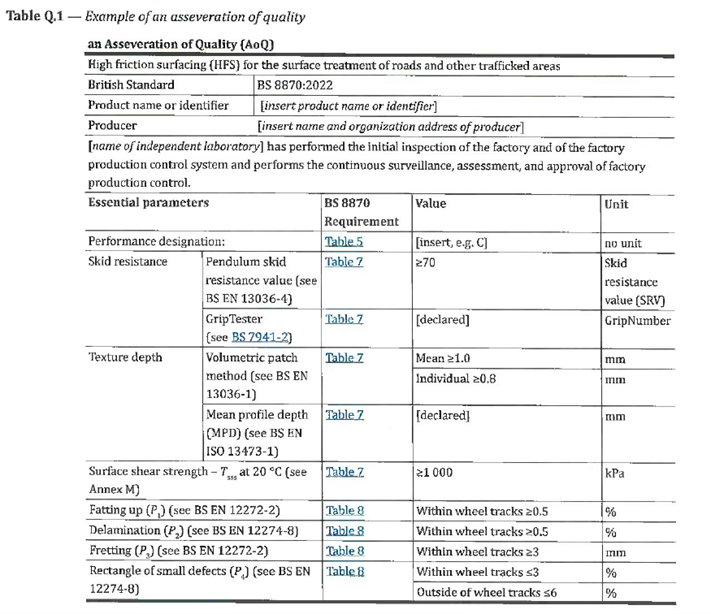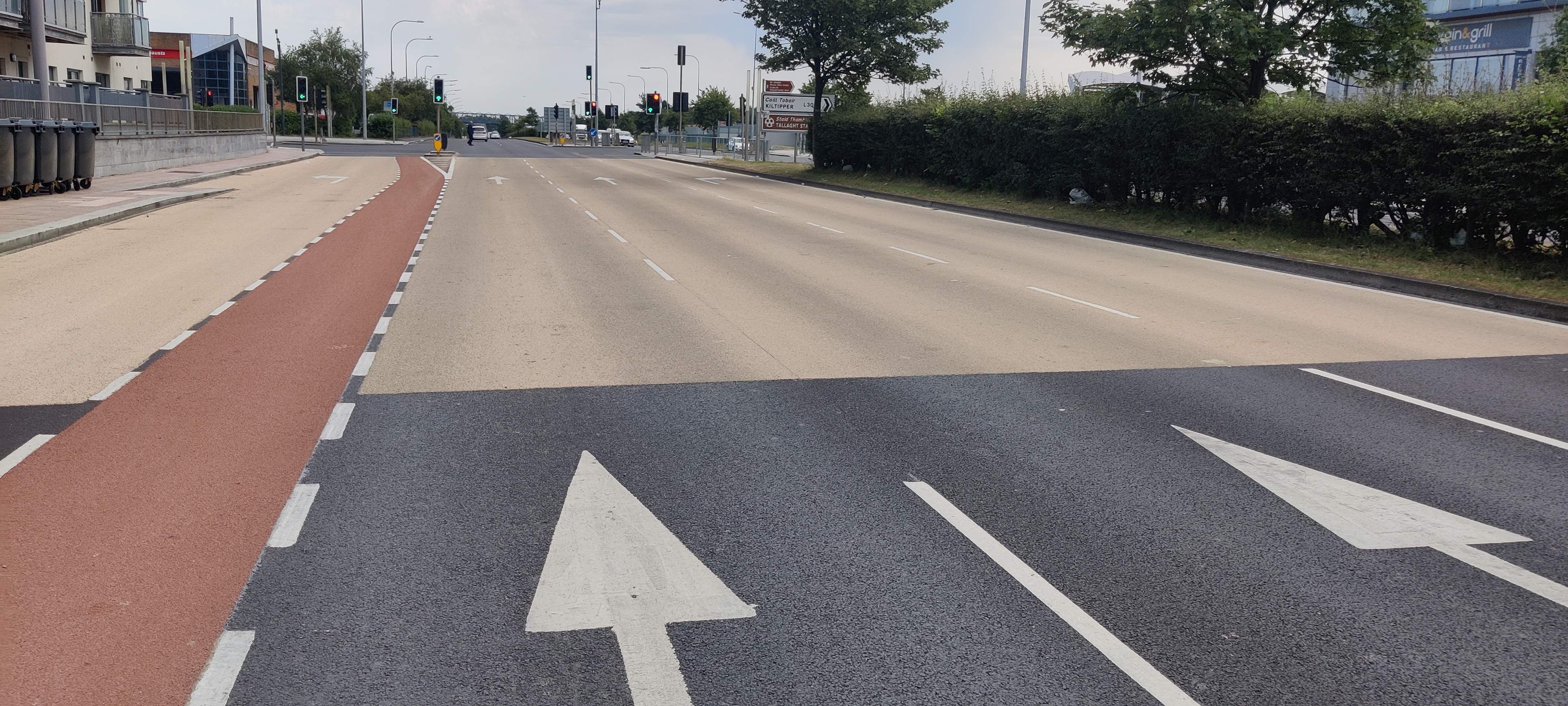BS 8870: The Rebirth of HFS?
NOTICE OF DISCLAIMER:
No liability is accepted for errors or inaccuracies in any of information contained on this website. All views or opinions expressed are personal to the author who does not purport to speak for, or represent, any professional body or organisation. Reliance should not be placed on any material contained in this webpage without first seeking and obtaining further professional advice.
A new British Standard BS8870:2022 was published entitled Materials for Roads – High Friction Surfacing – Specification. It sets out a completely new process for approval of the various HFS products (not systems). Importantly the standard differentiates between products based on performance. Calcined Bauxite is the only permissible aggregate as it is considered that it is the only aggregate that has the requisite characteristics for a durable HFS system. The standard applies to both cold applied & hot applied systems.


Hot Applied Cold Applied
In the context of BS 8870, it is important to differentiate between Producer and Installer. The Producer is defined as the organization that manufactures & supplies the product. The Installer is defined as the organization that installs the product. In some instances, the Producer & Installer can be the same organization, but there are many installers who are not producers.
It is anticipated that as HFS migrates away from BBA/HAPAS, there will be a two-year transition period leading to the expected SHW updates in 2024. There are some key differences in methodology, testing, operating and certification processes.
Regarding laboratory tests, most will be familiar with the
tests from TRL Report 176 that were used in the HAPAS scheme. However, in the
new standard, test methods have been modified, deleted and added to with some
of the key differences being:
- Modified PSV Test to be carried out on the 1-3mm
supplied calcined bauxite
- AAV test replaced by a modified Micro-Deval
- A new test for Surface Shear Strength at 20°C has been introduced. It replaces the Tensile Adhesion test
of the HAPAS scheme. The test has two functions – firstly to
test the suitability of the substrate for HFS overlay and to test the adhesion
of the HFS overlay to the substrate
- Erosion Index - there is a new method for the
determination of the degree of erosion and visual observations
- A new key Wear Test has been introduced to determine the resistance of HFS to wear caused by the turning action of tyres. The change in Texture Depth, SRV & Erosion Index occurring after 100,000 wheel passes are used in the determination.
 University of Ulster Wear
Test Machine
University of Ulster Wear
Test MachineSite performance is evaluated by means of a Type Approval
Installation Trial (TAIT). The Producer installs HFS in accordance with his
method statement on a defined section of road. It is then subjected to an
in-service performance assessment after a minimum of two years. Table 5 from BS
8870, copied below shows the site performance designations.

Prior to installation, the substrate is subjected to a visual inspection and in situ Surface Shear Strength test. In situ testing of skid resistance & texture depth is carried out after installation and at the end of the two year period. The maximum visual defects are assessed at the end of the two year period for compliance with Table 10 of the standard. Assuming the product satisfies the criteria for the performance designation of the test site at the end of the TAIT, it will be permitted for use for that performance designation and for less onerous performance designations, e.g category B can also be used on category A. The data from the TAIT should be recorded on TAIT Witness Certificate. The Producer should prepare & retain an Asseveration of Quality (AOQ), example below from BS 8870.

The Witness Statement & AOQ provide a demonstration that the particular HFS product meets the requirement of BS 8870.
As well as product approval, the BBA/HAPAS HFS scheme covered installation. Both Producer and Installer were covered by the scheme and both needed to be assessed and approved. In the case of installers, they needed separate approvals for each HFS product they installed. Because of this, the installed HFS product was designated a ‘system’, comprising approved product and approved installer operating in accordance with the manufacturer’s installation method statement. Under BS 8870, installers laying a compliant HFS product should comply with the producer’s installation method statement and be registered within a new HFS extension of NHSS 13. Once BS 8870 is fully operational it should bring major benefits to Installers who are not Producers.
Industry perception in certain quarters has been that HFS was not durable & provided poor value for money. Many authorities have replaced HFS with High PSV Asphalt as they had the misguided view that it provided equivalent skid resistance to HFS while increasing durability. The RSTA estimate that the area of HFS installed in the UK has fallen from 3 – 3.5 million m2 in the mid 1990’s to circa 750,000m2 now. The cost of BBA/HAPAS certification has been very expensive, estimated > £60k. BS 8870 should make product approval simpler and less expensive for Producers while relieving Installers of the very substantial BBA/HAPAS costs. This should hopefully result in innovation becoming more attractive within the sector. BS 8870 should also assist towards rebuilding confidence in HFS and clients can have confidence that products are based on performance and the correct HFS product will be installed in the correct application within a robust QA system.
